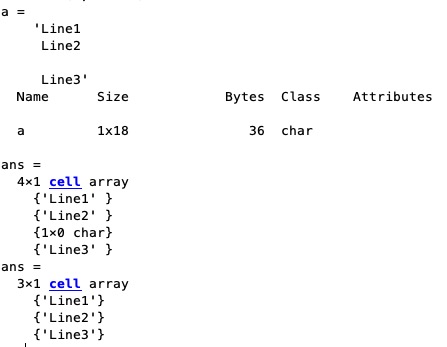TRselect
by Tim C. Lueth, SG-Lib Toolbox: SolidGeometry 5.6 - TR/Tetrahedrons
Introduced first in SolidGeometry 2.0, Creation date: 2014-12-14, Last change: 2025-09-14
returns a reduced tetrahedron triangulation for a given tetrahedron list
Description
In some cases, for instance when surfaces are tessellated, it makes more sense to operate using only the required vertices. Afterwards, the vertex list is much shorter, the index list reindexed. By using TL=SI(NTL), EL=SI(NEL) for a new edge list or FL=SI(NFL) for a facet list, the resulting EL or EL are backindexed to the original vertex list.
TL=SI(NTL); if size(TL,2)==1; TL=TL'; end;
FL=SI(NFL); if size(FL,2)==1; FL=FL'; end;
EL=SI(NEL); if size(EL,2)==1; EL=EL'; end;
This function is similar to VLFLselect or VLELselect.
See Also: VLELselect
, VLFLselect
, PLELselect
, PLFLselect
Example Illustration

Syntax
[TR,SI,TL]=TRselect(TR,TL)
Input Parameter
TR: | | Tetrahedron triangulation |
TL: | | Subset of TR.ConnectivityList |
Output Parameter
TR: | | New tetrahedron triangulation consisting of minimal points for the ConnectivityList subset |
SI: | | Sorting index |
TL: | | Reindexed subset of TR.ConnectivityList |
Copyright 2014-2025 Tim C. Lueth. All rights reserved. The code is the property of Tim C. Lueth and may not be redistributed or modified without explicit written permission. This software may be used free of charge for academic research and teaching purposes only. Commercial use, redistribution, modification, or reverse engineering is strictly prohibited. Access to source code is restricted and granted only under specific agreements. For licensing inquiries or commercial use, please contact: Tim C. Lueth
Algorithm (Workflow)
This function, TRselect, is designed to reduce a tetrahedron triangulation to a minimal set of points based on a given subset of the triangulation's connectivity list.
Input Parameters
- TR: The original tetrahedron triangulation object. It contains the full set of points and connectivity information.
- TL: A subset of the connectivity list from the original triangulation
TR. This subset specifies which tetrahedrons are of interest.
Output Results
- TR: A new tetrahedron triangulation object. It consists of only the minimal set of points required for the specified subset of the connectivity list.
- SI: A sorting index that maps the new set of points back to the original set of points in
TR.
- TL: The reindexed subset of the connectivity list, adjusted to match the new set of points.
Algorithm Steps
- Use the
unique function to find the unique vertices in the subset TL. This function returns:
SI: The indices of the unique vertices in the original point list.c: The indices of the unique vertices in the new, reduced list.
- Extract the minimal set of points from
TR.Points using the indices SI. This gives the new vertex list VL.
- Reshape the connectivity list
c to match the original dimensions of TL. This gives the reindexed connectivity list.
- Create a new triangulation object
TR using the reindexed connectivity list and the new vertex list VL.
Algorithm explaination created using ChatGPT on 2025-08-19 00:59. (Please note: No guarantee for the correctness of this explanation)
Last html export of this page out of FM database by TL: 2025-09-21